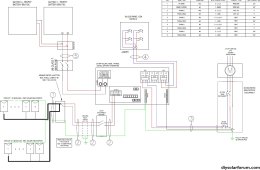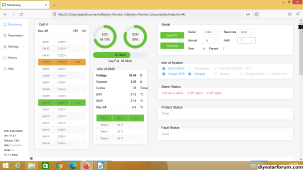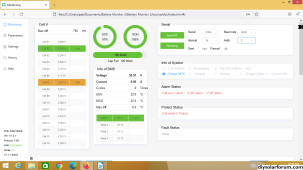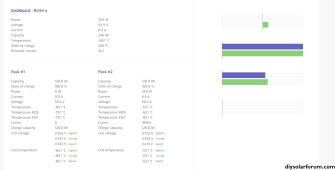Hello - I'm using trophy batteries 120AH 48V. I purchased two of them.
Since purchasing these, they have needed to be replaced.
The first one would had a cell that continually went below 2.8V, which I believe was the cutoff where the battery would go into alarm mode. It would actually go below that value. That would trigger the battery to turn off. I would have to open up the battery and charge that cell to at least 2.8V before reconnecting to my inverter. That battery was replaced.
The second one had the same issue. However, in addition to the above, it also dropped to 80% SOH. Also, when it would shutoff, it would go down to 0% SOC. It's not that the screen just showed 0% SOC - it would actually, when recharging, start from 0. That one was also replaced.
The first replacement has the same issue and is also at 80% SOH now. The second replacement has the same issue (cell voltage going too low and shutting off).
This seems very odd to me that this would happen 4 times. However, Trophy CS hasn't identified any issue with my setup.
I'm wondering if anyone here can look at my setup and see if anything might be wrong and leading to this issue.
I've attached a diagram here. The only differences between my current setup and the diagram are that the PV disconnect and the ground fault device are switched in location. Also, I have only 6 panels up, in a 3s2p setup.
All positive cables are the same length and type, as are the negative cables.
Thanks.
Since purchasing these, they have needed to be replaced.
The first one would had a cell that continually went below 2.8V, which I believe was the cutoff where the battery would go into alarm mode. It would actually go below that value. That would trigger the battery to turn off. I would have to open up the battery and charge that cell to at least 2.8V before reconnecting to my inverter. That battery was replaced.
The second one had the same issue. However, in addition to the above, it also dropped to 80% SOH. Also, when it would shutoff, it would go down to 0% SOC. It's not that the screen just showed 0% SOC - it would actually, when recharging, start from 0. That one was also replaced.
The first replacement has the same issue and is also at 80% SOH now. The second replacement has the same issue (cell voltage going too low and shutting off).
This seems very odd to me that this would happen 4 times. However, Trophy CS hasn't identified any issue with my setup.
I'm wondering if anyone here can look at my setup and see if anything might be wrong and leading to this issue.
I've attached a diagram here. The only differences between my current setup and the diagram are that the PV disconnect and the ground fault device are switched in location. Also, I have only 6 panels up, in a 3s2p setup.
All positive cables are the same length and type, as are the negative cables.
Thanks.
Attachments
Last edited:











